The town of Nobleford, Alta., in Canada remains one of the most significant places in no-till farming's history. The man by which the town is named, Charles Sherwood Noble, is why. In response to the extreme soil drifting in Western Canada, Noble developed a system to shear stubble and weeds below the ground and leave the residue on top of the soil to reduce evaporation and prevent erosion.
No-Till Farmer's editors took a trip to Nobleford this summer to explore this piece of agriculture's history. Here's a timeline of Noble's life and a look at the outdoor museum display that the town dedicated to Noble's legacy.
1873-96
Born in 1873 in State Center, Iowa, Charles Noble was the oldest of 6 boys. Noble left school at the age of 15 to help his father provide for the family. Noble took out a 160-acre homestead near Knox, S.D., according to plaques at the outdoor museum in Nobleford.
1902-18
In 1902, Noble moved to the Claresholm, Alta., area, known as the Northwest Territory back then. Noble later purchased large tracts of land in the southeast of Claresholm. The purchase brought his holdings to nearly 30,000 acres, which was the largest farm in the British Empire. Noble established the Noble Foundation as a multi-focused enterprise. It built a general store, a hotel and a farm. 10 steam tractors, 2 heavy gas tractors, farm animals and more farming equipment were also purchased. A grated road up to the property was put in place, and 4 sets of buildings went up.
In the Spring of 1917, 16,000 acres of the new land were cultivated and seeded at a pace of about 395 acres per day, according to the Noble Foundation.
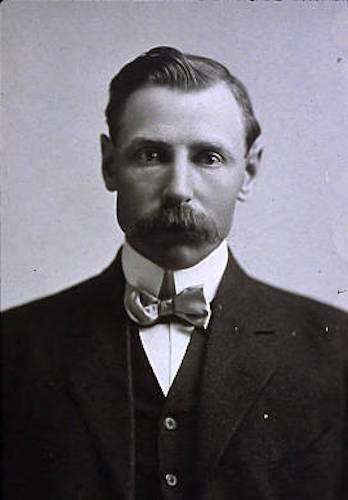 Photo Source
The Hamlet of Noble was established during this time. Because Noble owned so much land in the area and built many of the buildings, the hamlet was named after him. Noble eventually moved his family to the area, and it was renamed Nobleford in 1913 to not be confused with the town of Noble in Ontario. The Lethbridge area in southern Alberta, known as the "dry belt," is where Nobleford is located.
Photo Source
The Hamlet of Noble was established during this time. Because Noble owned so much land in the area and built many of the buildings, the hamlet was named after him. Noble eventually moved his family to the area, and it was renamed Nobleford in 1913 to not be confused with the town of Noble in Ontario. The Lethbridge area in southern Alberta, known as the "dry belt," is where Nobleford is located.
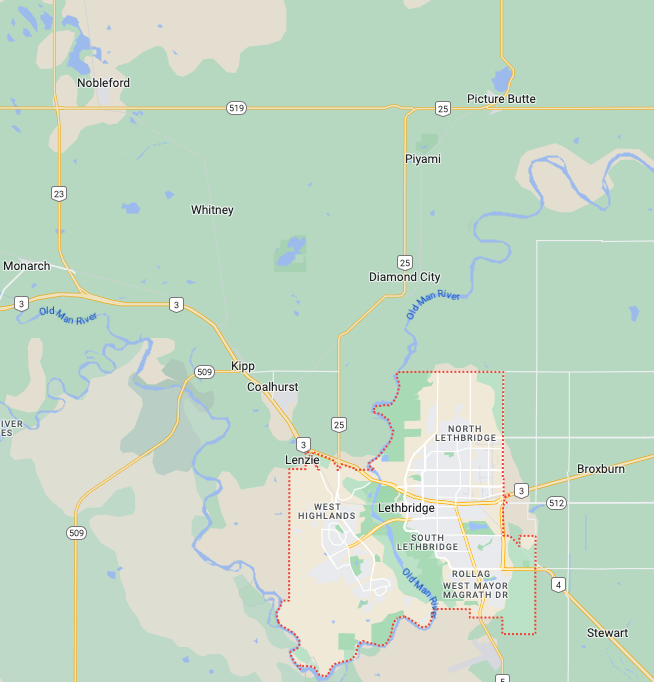
By 1916, Noble was farming about 10,000 acres in and around Barons, Monarch and Nobleford. Before 1916, Noble received several nicknames such as "Flax King", "Oat King" and "Rye King." Noble also received the nickname "Wheat King" after producing 54,365 bushels of Marquis wheat on 1,000 acres of land. The foundation purchased a large portion of Cameron Ranch in 1917. Cameron Ranch was 35 miles east of Nobleford.
1922-30
Noble acquired over 30,000 acres of land by 1922. However, due to poor crops, falling prices and too much debt, he could not keep up the payments for the land. Noble owed about $600,000 worth to Spokane trust company and lost all of his holdings. Noble eventually gained about 8,000 acres of the land back by 1930.
1930-36
Amid the Great Depression and the Dust Bowl, soil health and regenerative agriculture practices were not commonplace. Soil drifted in "black blizzards," massive clouds of airborne soil that could travel hundreds of miles. Strip farming and planting crops in alternating strips were how farmers combated erosion at the time. But strips could eventually become useless, depending on the direction of the wind. Farmers also used tillage to control weeds at the time, contributing to soil disturbance.
Since the dry year of 1919, Noble had been interested in soil erosion. In an effort to get Noble away from some of the troubles of the Great Depression, his friends and family convinced him to take a trip to California. It was there that he saw a beet farmer using a straight-blade tool to cut into the soil and loosen the beets. The blade got to the weeds without interrupting the crops and soil. Noble ended up returning from California early with the idea for the first Noble blade.
The Noble Blade was an underground 8-foot-wide straight blade with two vertical standards designed to leave trash above ground while cutting weeds at the roots to terminate them. The first blade has been lost in the decades following its creation, but the second blade is in the Glenbow Museum and the third in a park in Nobleford today (see below).
A decent blacksmith, Noble used an old grader blade with a borrowed forger and anvil. He reshaped the blade and fixed it with two stout arms and a frame. He gave it 2 wheels and a means of depth control. The initial design wasn't perfect, but it was functional.
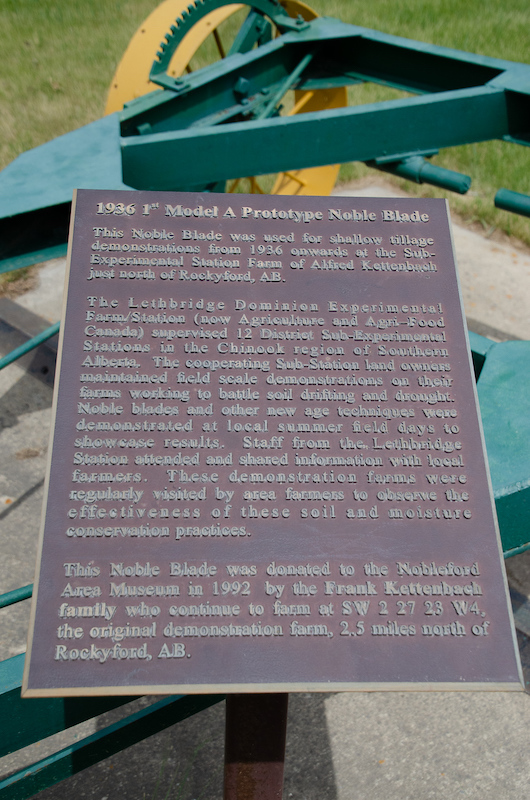 This plaque, located at the display of the first Noble Blade, says the 1936 1st Model A Prototype Noble Blade was used for shallow tillage demonstrations from 1936 onward. Source: Benjamin Thorpe, No-Till Farmer
This plaque, located at the display of the first Noble Blade, says the 1936 1st Model A Prototype Noble Blade was used for shallow tillage demonstrations from 1936 onward. Source: Benjamin Thorpe, No-Till Farmer
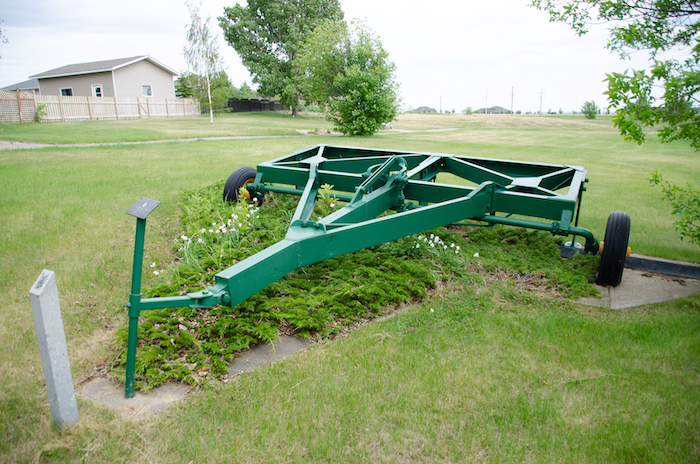
Noble Blade Model G: 75 machines manufactured. Straight blade cut from 16-24 inches. "V" blades cut from 18-21 inches. Unit required 5-6 plow tractors. Source: Benjamin Thorpe, No-Till Farmer
1937
By the summer of 1937, Noble had 4 blades ready and was satisfied with the results. Throughout 1937, Noble built 50 cultivators and sold another 50 the following year. The customers buying the Noble Blade included the U.S. Soil Conservation Service and several Canadian experimental stations.
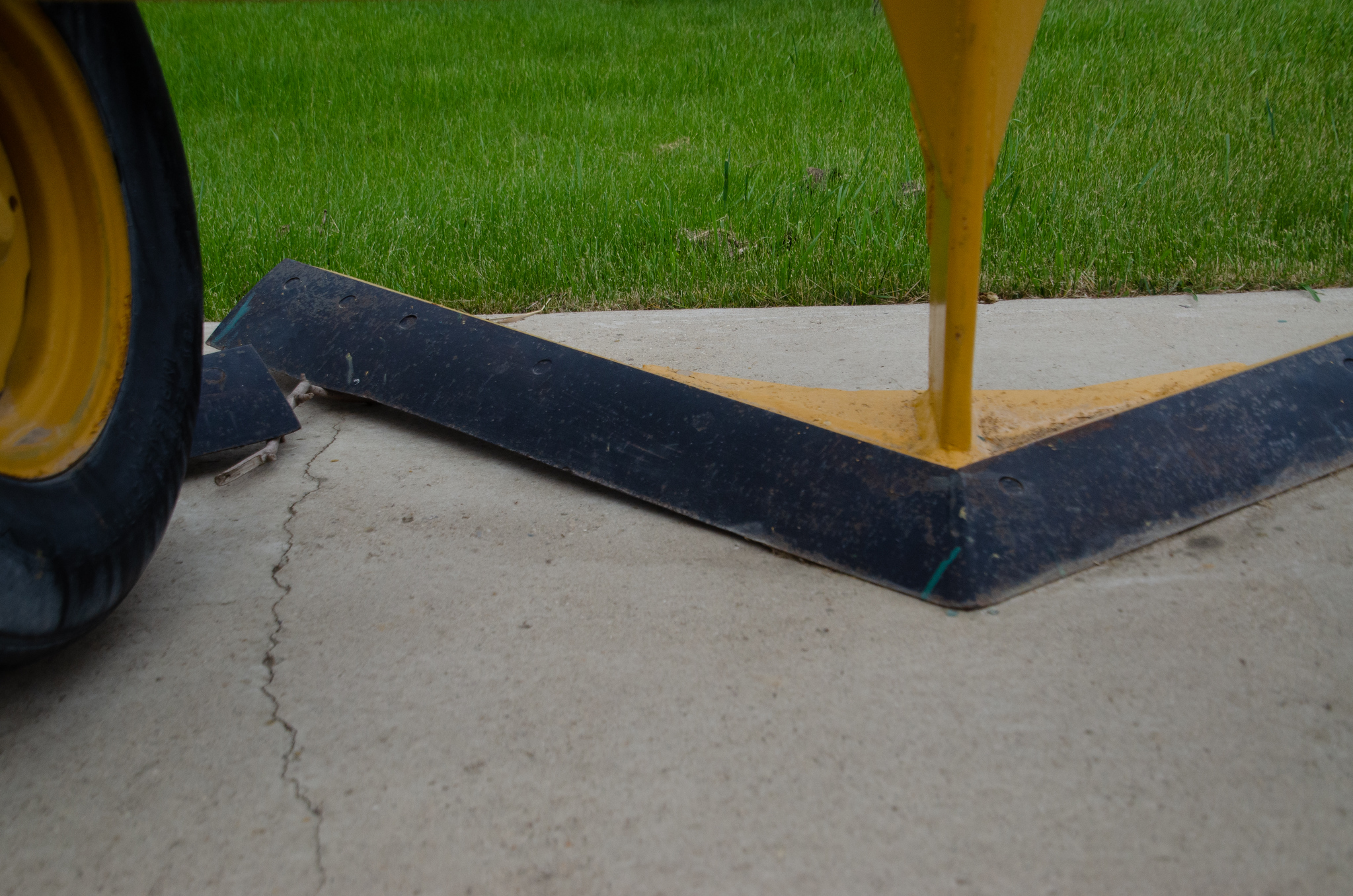 Changes eventually were made to the blade, which included the straight blade being replaced by a V-shaped blade. Source: Benjamin Thorpe, No-Till Farmer
Changes eventually were made to the blade, which included the straight blade being replaced by a V-shaped blade. Source: Benjamin Thorpe, No-Till Farmer
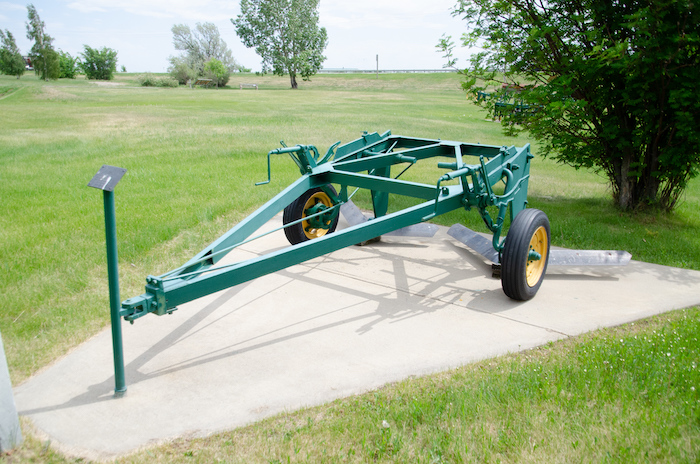
Noble Blade Model B: Built 1939-1946. Approximately 300 machines manufactured. Cut 8-10 inches with a straight or "V" blade. Required a 2-3 plow tractor. Source: Benjamin Thorpe, No-Till Farmer
1941-51
Sales for the blade rose to the point where a factory was built in 1941 to keep up with demand. By 1951, a larger plant was built to replace it. Within its first year, it sold $1 million. Here are the blades that followed the Model A.
"They reflect advances in technology in the blades themselves and in the increased horsepower of the tractors pulling them," reads a plaque at the park.
The manufacturing of the Noble Blade became commercial when neighbors wanted a blade of their own once they saw how successful it was. Because of that, Noble Cultivators Ltd. was born. It started as a division of Noble Farms in a small workshop. In order to meet the demand, a Quonset hut was built in Nobleford for the project to take place in 1941. By 1950, the building wasn't large enough to meet the market needs. A high-clearance hoe was added to the line of products and was designed to place the seed in no-tilled fields.
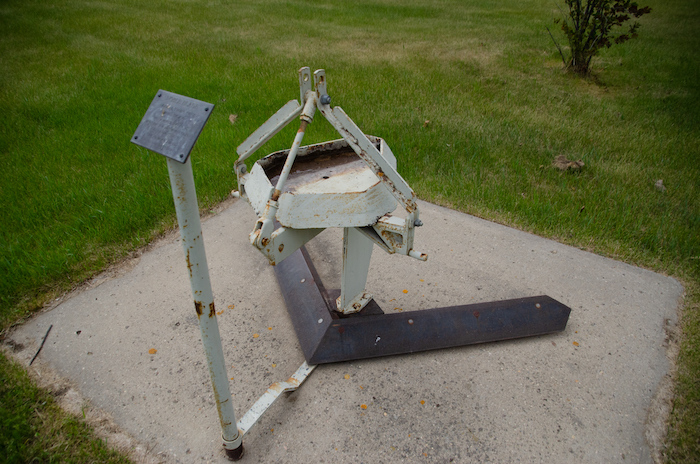
Noble Blade Model F, 3-point hitch: Built 1945-1947. Approximately 200 manufactured. Manufactured with "V" blade. It cut 4.5-7 inches. Needed 1-2 plow tractors. Source: Benjamin Thorpe, No-Till Farmer
In 1951, Noble becomes the first person to be inducted into the Alberta Agriculture Hall of Fame.
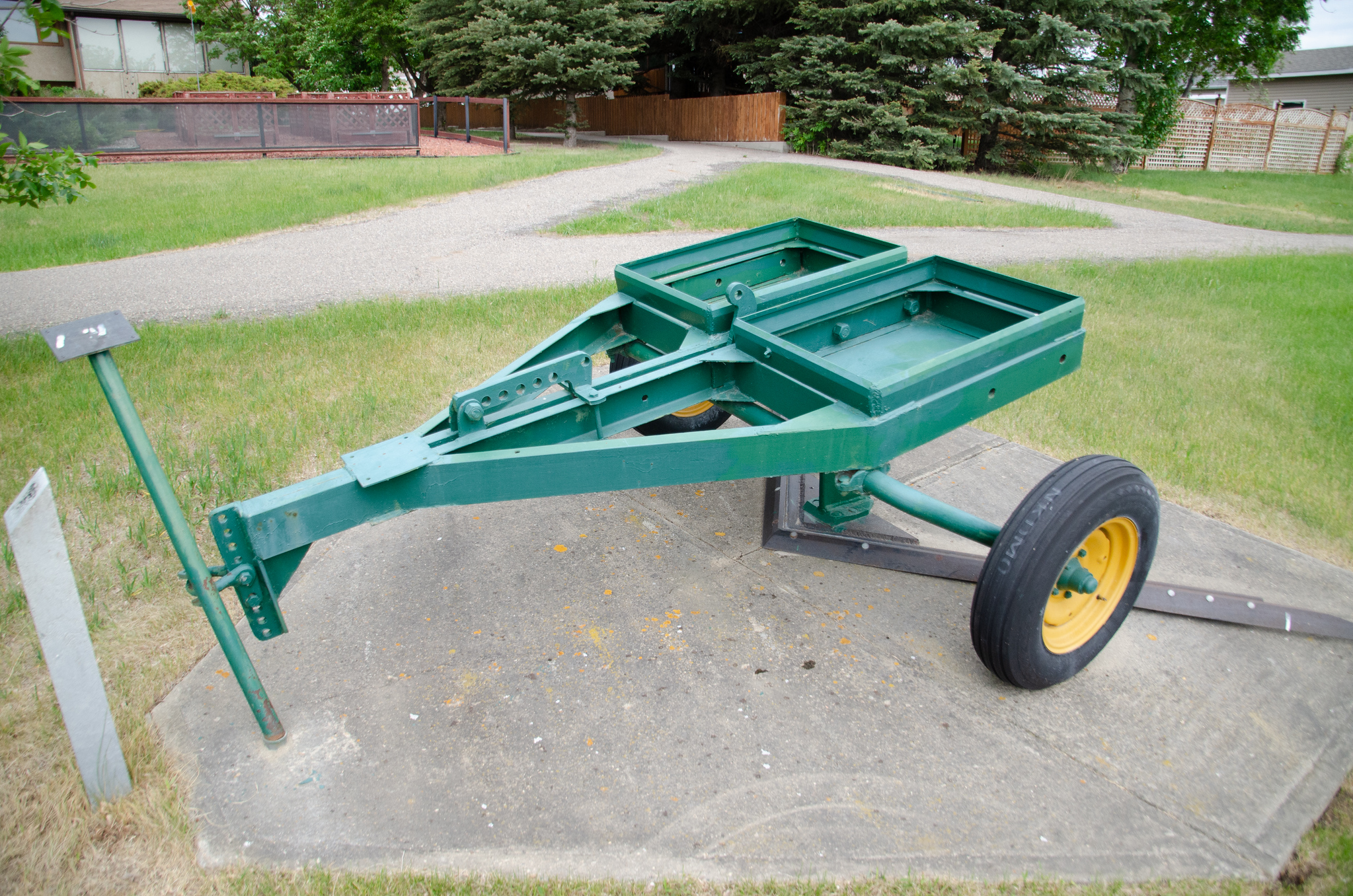
Noble Blade Model M: Built 1946-50. Approximately 500-600 machines manufactured. Single-unit cut 6-10 inches with a straight or "V" blade. This unit required 2-3 plow tractors. It could be used in hitches up to 5-units. Source: Benjamin Thorpe, No-Till Farmer
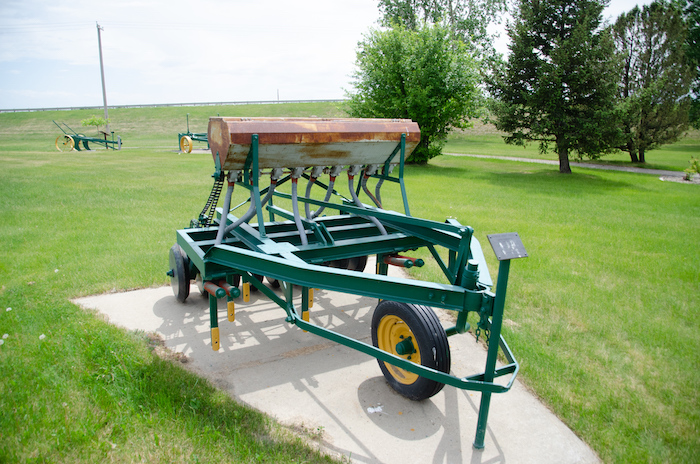
Noble Seed Drill Model DK Series: Built 1948-77. Approximately 7,500-10,000 machines manufactured. Single-unit got up to 7 inches. This unit required a 2 plow tractor. Source: Benjamin Thorpe, No-Till Farmer
1952 & Beyond
Since Noble's time, Western Canada has become a world leader in no-tillage, much more so than in the U.S. where it was birthed. Canada currently has the 5th-highest amount of no-till acres in the world at 53.7 million acres.
In Nobleford, Kenex Park — where the museum of Noble's equipment lives — was developed in the early 1980s. The original design of the park has three parts: a heritage display area (the Noble Blade), a BMX track and an RV rest stop area. The grand opening of the heritage park area happened during Nobleford Sport's Day on August 22, 1992. Its primary purpose was to show the restored Noble Blade Cultivators. The park has become a stopping point for all tourists interested in farm-based machinery.
In 2005, the American Society of Agricultural and Biological Engineers (ASABE) honors Charles Noble and his Noble Blade as a Landmark Ag Engineering Achievement.
Related Content
Timeline of the No-Till Revolution

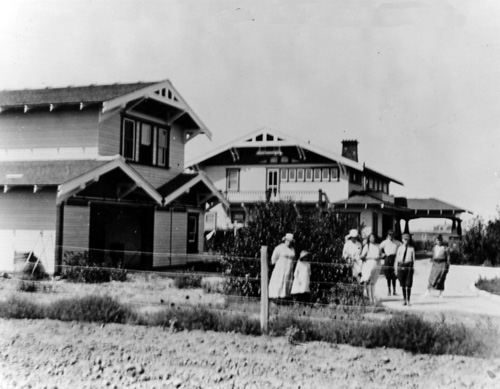





Post a comment
Report Abusive Comment